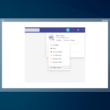Wondering how to Install nload on Ubuntu 20.04? Don’t worry, we got you covered!
Those of you who have experience working in the networking industry are probably aware of using nload. In case you didn’t know, it is a tool that is responsible for constantly monitoring any incoming and outgoing traffic on your system’s network.
Being a free-to-use, open-sourced tool, nload serves as an all-in-one network monitoring application. Through it, you can monitor network traffic, data transfers, and overall network usage.
This is a guide to help you install nload on Ubuntu 20.04 LTS. We’ll cover the method of installation, along with the basic setup.
While this guide is meant for those using Ubuntu 20.04 LTS, the steps covered should work for other available versions of Ubuntu as well.
So without further ado, let’s begin!
Method 1: Installing $ nload on Ubuntu using $apt Install.
All methods of installing nload on Ubuntu make use of the Command Terminal.
In this method, you’ll be installing nload on Ubuntu with the help of the $apt install command.
Follow these steps to install nload on your system without any problems:
- Start by opening the Command Terminal. You can achieve this by pressing Ctrl + Alt + T on your keyboard.
- Next, type the following command:
$ sudo apt update
This should update all available packages and repositories to their latest versions.
- Once that’s done, type the following in the Command Terminal:
$ sudo apt install -y nload
With the steps followed correctly, you should now have nload installed on your system.
You can also use the following commands to install nload on Ubuntu.
$ sudo apt-get install -y nloadIf this method doesn’t work for you, then don’t worry, as we’ve got many more methods to cover.
Method 2: Installing $ nload on Ubuntu Using Aptitude.
If the previous method didn’t seem to work, then you can try installing nload using aptitude.
The method is similar to the previous one, with minor differences in syntax.
Follow these steps to install nload on Ubuntu using aptitude:
- First, open the Command Terminal by pressing Ctrl + Alt + T on your keyboard.
- Next, type the following to install aptitude on your system:
$ sudo apt install aptitude
- Once aptitude is installed, update the aptitude repositories by typing the following:
$ sudo aptitude update
- When the packages finish updating, type the following to install
nload.
$ sudo aptitude install nloadIf you followed the steps in this guide correctly, then congratulations! You have successfully learned how to install nload on Ubuntu 20.04 LTS. All that’s left now is to learn how to use it.
Getting Started With $ nload.
Now that you’ve installed nload on your system, you can proceed to learn how to use it.
Know that nload is a tool that’s responsible for monitoring network traffic only, and that you’ll require additional network tools if you wish to make any advanced changes.
Follow these steps to get started with nload:
- Start by opening the Command Terminal. You can achieve this by pressing Ctrl + Alt + T on your keyboard.
- Next, type the following command:
$ nloadOr
$ nload <port name>In our case,
$ nload eth0This should display the output as shown in the image below

There are a number of shortcut keys available that aid in navigating through the nload console. A list of these shortcuts is given below:
- Left, Right arrow keys: They are used to switch/navigate between different devices.
- Q: Exit the console.
- F2: On pressing this key, the options window will become visible.
- F5: Pressing this key will save your newly configured settings.
- F6: To load any settings file, press this key.
With this, you have learned how to use nload on Ubuntu. The next section of this guide is meant to cover some of its additional features.
Additional Features.
Aside from the shortcuts, you can use nload with some additional options to truly maximize your experience.
To make your console display all network interfaces simultaneously, type the following in the Terminal:
$ nload -m
It should be noted that nload will not display any traffic graphs when executed with this option.
You can also use nload to change the length of the time window for its calculations. This can be done by using the following command:
$ nload -a <time(seconds)>In our case,
$ nload -a 350
Additionally, you can tweak the refresh rate of the display window by typing the following:
$ nload -t <time(seconds)>In our case,
$ nload -t 400
Like any other Linux command, you can use nload with multiple options as follow:
$ nload <option 1> <option 2> <arguments>For example,
$ nload -t -a 400 350To get a full list of the possible options, type the following:
$ nload --help
Removing $ nload From Your System.
Uninstalling nload is a simple and easy process using the Command Terminal.
Multiple commands can be used to remove nload from your system. Each removes the contents of nload to a specific extent.
Follow these steps to remove nload from your system:
- First, open the Command Terminal by pressing Ctrl + Alt + T on your keyboard.
- Next, type the following command to remove nload.
$ sudo apt remove nload
This will remove the nload package from your system. However, this will still keep the dependencies.
To remove nload along with relevant data, type the following:
$ sudo apt purge nloadThis will remove the nload package along with its data.
To get rid of all data, packages, and their dependencies, type the following:
$ sudo apt-get -y autoremove --purge nloadThis will remove all contents that are related to nload.
Although there are three commands that seem to do the same task, i.e removing/uninstalling an application, learning how to use them as per need can be a game-changer.
Furthermore, you can use the GUI to uninstall unwanted applications from Ubuntu as well. These tools are sure to aid you in the long run.
This concludes our guide on how to install nload on Ubuntu 20.04 LTS. If you have any questions or suggestions, let us know in the comment section down below.
If this guide helped you, please share it. 🙂





